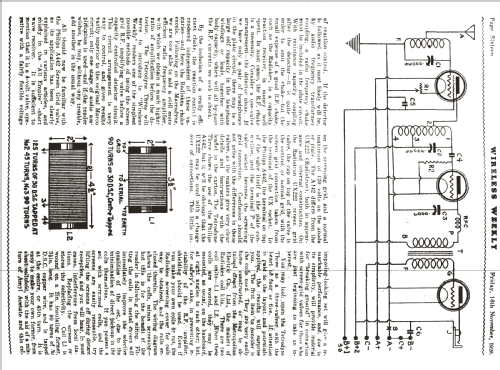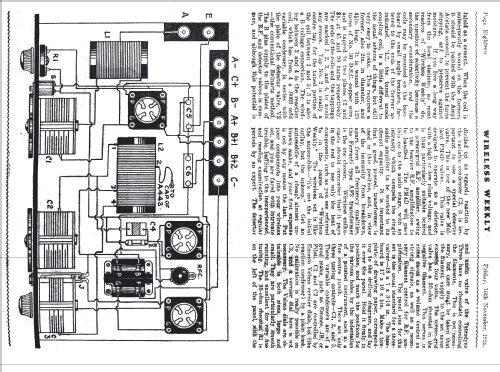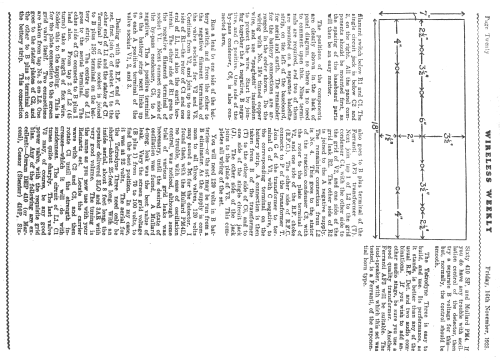Tetrodyne Three
Wireless Weekly Magazine, Sydney
- Country
- Australia
- Manufacturer / Brand
- Wireless Weekly Magazine, Sydney
- Year
- 1928
- Category
- Kit (Parts plus instruction) or building instructions only
- Radiomuseum.org ID
- 332284
Click on the schematic thumbnail to request the schematic as a free document.
- Number of Tubes
- 3
- Main principle
- TRF with regeneration
- Wave bands
- Broadcast only (MW).
- Power type and voltage
- Storage and/or dry batteries
- Loudspeaker
- - This model requires external speaker(s).
- Material
- Bakelite, TUBES VISIBLE
- from Radiomuseum.org
- Model: Tetrodyne Three - Wireless Weekly Magazine,
- Shape
- Chassis only or for «building in»
- Notes
-
The Tetrodyne Three will serve to introduce to “Wireless Weekly” readers one of the simplest possible methods of using the screen grid RF amplifying valve before a capacity-controlled detector circuit. This circuit arrangement is very easy to control and gives results vastly superior to the original Marco circuit; only one stage of audio amplification is used and if the reader wishes, he may, without any trouble, add another in the usual way.
All should now he familiar with the Philips A442 Screen Grid valve, as its application has been clearly explained in various articles, and chiefly in the “All Empire” short wave receiver. It is sufficient to mention that it is a 4-volt valve, operative with a fairly flexible voltage on the screening grid and a normal maximum of 120 volts on the anode or plate. The A442 differs from the UX222 (Radiotron), both in appearance and internal construction. On the Radiotron UX222 screen grid valve, the cap on top of the valve is the control, or normal grid, with the screen grid connection taken from the terminal of the UX socket. In the Philips A442, the terminal on top of the valve itself is the plate connection, and the terminal P of the valve socket becomes the screening grid connection. Confusion should not arise with the differences in these valves, as the makers give very clear details and instructions with the leaflet in the carton. The Tetrodyne Three shows the use of the Philips A442, but it well be obvious that the UX222 may be used with a changeover of connections. This little unimposing-looking set will give a remarkable performance, and, due to its simplicity, will provide material for “breaking ground” in connection with screen-grid valves for those who are just beginning to take an interest. You may look upon the Tetrodyne Three as a three-valver with the heart of four or five. If attention is paid to the layout and potentials applied, the results will surprise you. Wireless Weekly November 16, 1928, page 15-16.
- Mentioned in
- Wireless Weekly (Australia) (November 16, 1928, page 15-16.)
- Author
- Model page created by Gary Cowans. See "Data change" for further contributors.
- Other Models
-
Here you find 19 models, 13 with images and 19 with schematics for wireless sets etc. In French: TSF for Télégraphie sans fil.
All listed radios etc. from Wireless Weekly Magazine, Sydney





